Papers by Xosé Ignacio Vilaseco
v¡ opezEomeroD iF nd w£ nnEforrz¡ sD F nd q¤ uimilEpri£ nD eF nd ilseo ¡ zquezD FsF @PHISA 94quid... more v¡ opezEomeroD iF nd w£ nnEforrz¡ sD F nd q¤ uimilEpri£ nD eF nd ilseo ¡ zquezD FsF @PHISA 94quidoiro hixitl4F en inititive to reover lost sienti(informtion from privte imge rhivesF9D he iuropen rheologistF @RQAF ppF WHEWQF Further information on publisher's website: httpXGGwwwFeEEForgGieGorR 4 3.pdf Publisher's copyright statement: Additional information: Use policy The full-text may be used and/or reproduced, and given to third parties in any format or medium, without prior permission or charge, for personal research or study, educational, or not-for-prot purposes provided that: • a full bibliographic reference is made to the original source • a link is made to the metadata record in DRO • the full-text is not changed in any way The full-text must not be sold in any format or medium without the formal permission of the copyright holders.
Sánchez Arines, M. C. (2018) O cemiterio compostelán de Boisaca e o patrimonio funerario. Santiago: Concello de Santiago, 2018
The excavation of Chousa Nova 1 mound revealed an undisturbed megalithic chamber, sealed in the N... more The excavation of Chousa Nova 1 mound revealed an undisturbed megalithic chamber, sealed in the Neolithic. It presented an open cist-like form, and probably only one person was buried in it, with a necklace composed of variscite and amber beads. The capstone had fractured in the past, one piece still in its original position, and the others had fallen down inside the chamber. After this, the barrow was raised, sealing the site. In this paper we argue what happened at the monument, an intended destruction, as it has been proposed in other megaliths, or a collapse.
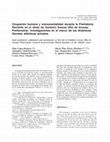
The prehistoric occupation of the islet of Guidoiro Areoso, in the Ría de Arosa, has been known s... more The prehistoric occupation of the islet of Guidoiro Areoso, in the Ría de Arosa, has been known since the late 1980s when work led by one of us revealed the existence of several funerary monuments and a Bronze Age occupation site. In recent years, the erosion has caused a rapid alteration of the dune and the shoreline, exposing a number of new elements and critically threatening the integrity of the sites. As a result of recent coastal erosion and extreme weather events two funerary monuments (Mámoa 5 and Cista 1) and part of the paleosol located in the western coast of the islet have been destroyed. The present paper reports the first results of both the latest survey and monitoring procedures and of the recent study and interpretation of the Bronze Age ceramic assemblages. As a result, the paper highlights the relevance of the islet and of the proposed methodologies for the study of the prehistoric occupation of the coast in Iberia and other parts of Atlantic Europe.
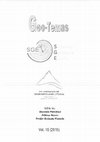
El islote Guidoiro-Areoso, situado en un sector de bajos rocosos de poca profundidad de la Ría de... more El islote Guidoiro-Areoso, situado en un sector de bajos rocosos de poca profundidad de la Ría de Arousa está formado al sur por un islote rocoso granítico sobre el que se ha instalado un complejo dunar, y al norte por un lóbulo arenoso. Se ha documentado la existencia de una intensa ocupación humana en el islote entre el Neolítico y la Edad del Bronce, incluyendo un uso funerario y una ocupación estacional. Durante el último decenio la erosión marina ha dejado al descubierto nuevas evidencias arqueológicas, introduciendo un alto riesgo de destrucción de las estructuras descubiertas. A partir del análisis de información aeroespacial entre 1945 y 2013 se ha verificado un comportamiento morfodinámico caracterizado por la rotación del lóbulo arenoso, con una magnitud máxima de 14.15º hacia el este entre 1956 y 1984. Entre 1984 y 2000 se produce además su desconexión del islote rocoso, manteniendo la rotación e iniciando un desplazamiento progresivo hacia el este. Entre 1945 y 2013 la superficie dunar vegetada del lóbulo se ha reducido en un 28%. Si bien el proceso erosivo se ha relacionado con el ascenso del nivel del mar, la rotación del lóbulo implica desplazamientos sedimentarios que han podido causar la erosión de la playa y los frentes dunares.
The European Archaeologist -Issue No. 43: Winter 2015 90 and Antarctica included, JGA will presen... more The European Archaeologist -Issue No. 43: Winter 2015 90 and Antarctica included, JGA will present an exciting forum for this complex branch of archaeology. The close relationship between many of these frozen discoveries and the effects of global warming makes this new project current and relevant. The Journal will include original multidisciplinary research papers, short reports and reviews including archaeology, anthropology, ethnography, glaciology, geography, palaeobotany, indigenous knowledge, conservation science and climatology."
Descubrindo. Anuario de Estudios e Investigación de Deza 7, 253–270., 2005
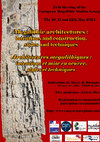
Megalithic architectures: intentions and construction, styles and techniques
The existence of a Building Project is difficult to ascertain in our study area, though in certai... more The existence of a Building Project is difficult to ascertain in our study area, though in certain cases we have a hint of such. On a larger scale we observe similarities in the architectonic design and the constructive sequences that suggest the builders were following a certain set of rules, particularly in the case of the passage graves. At a constructive level the range of variation detected is enormous and it is probably linked to shifts in ritual and the purpose of the mounds. Yet we could propose three distinct life-stories for these monuments:
- A fairly static one, characterizing tombs resulting from a single constructive episode, without further alterations.
- Another, more dynamic, affecting certain monuments that start as a single-chamber mound, then undergoing an aggrandizing process that finishes in the raising of a passage-grave.
- A deconstructive pattern, experienced by a number of mounds where stone chambers are total or partially dismantled, to be substituted by simpler structures such as pits and stelae.
With respect to those patterns two questions may be posed, none of which has a straight answer: whether a chronological factor is at play and the eventual changes in the funerary ritual attached to those shifts in design.
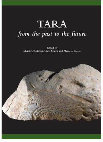
Tara – From the Past to the Future. Towards a new Research Agenda, 2013
The Mound of the Hostages and its surroundings have seen several episodes of building or reuse ra... more The Mound of the Hostages and its surroundings have seen several episodes of building or reuse ranging from the local Neolithic to the present times. In Galicia (North-western Spain) we do not have such an outstanding example of persistence through time but, on the other hand, an increasing number of megalithic mounds reveal a complex history. We can distinguish, to begin with, places that register human activity prior to the raising of a mound, which may be related to the actual builders or earlier in date. In other cases we observe a process of expansion that leads to single chambers being covered up by larger passage graves. Some tombs, moreover, are subject to episodes of reuse from Beaker times onwards, that ignore the original architectonic design of the monument. There comes a time, though, when the funerary nature of these structures falls into oblivion; but this does not mean that these monumental tombs are completely forgotten, and there is some evidence of their symbolic presence in the rural landscape. Much to their disgrace, this permanence in the people’s imagination provoked a widespread wave of looting in the seventeenth century, in search of the bullion allegedly hidden in the megalithic mounds.
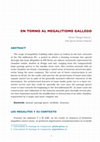
The surge of megalithic building takes place in Galicia in the last centuries of the 5th milleniu... more The surge of megalithic building takes place in Galicia in the last centuries of the 5th millenium BC, a period in which a farming economy has spread through this land. Megaliths in NW Iberia are almost exclusively represented by chamber tombs, modest in design and size, ranging from the comparatively large passage graves to the smaller stone cists. Also earthen mounds with no
stone chamber are found, containing a varied array of funerary structures (pits, stelae being the most common). The actual use of these constructions is not known in detail, for the acidic soils prevent the preservation of bones and other organic matter but in spite of the generally assumed collective character of the
internment, the architectural features of some tombs point out to a more restrictive access and that could be specially the case once the passage graves cease to exist towards the beginning ot the 3rd millenium BC. In some cases the construction and utilization of the funerary mounds goes through several phases
that sometimes include the modification or destruction of an older chamber, superseded by a larger and more complex one.
'Funerary customs in NW Iberia along the Final Neolithic and Copper Age : megaliths and other gra... more 'Funerary customs in NW Iberia along the Final Neolithic and Copper Age : megaliths and other grave types'. We outline the funerary diversity that takes place once the passage graves are closed by the end of the IV / beginning of the III millennium BC. There is a variety of mound burials that keep somewhat the long-standing Neolithic tradition, either maintaining their architectural design, by sticking to the old necropolis or through the reuse of the pre-existing megalithic tombs. Among the more remarkable novelties are the quality of the grave-goods, that include now decorated vessels like the Bell Beakers and, towards the end of the III millennium, the surge of individual burials that will be the norm along the succeeding Bronze Age.
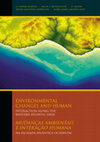
A. Campar Almeida, Ana M. S. Bettencourt, D. Moura Sérgio Monteiro-Rodrigues, Maria Isabel Caetano Alves (eds.). 2012. Environmental changes and human interaction along the Western Atlantic Edge / Mudanças ambientais e interação humana na fachada Atlântica Ocidental. Coimbra. p. 243-258., 2012
Guidoiro Areoso, a small islet in the middle of the Ría de Arousa, the bigger of the Galician est... more Guidoiro Areoso, a small islet in the middle of the Ría de Arousa, the bigger of the Galician estuaries, has many signs of occupation during prehistoric times. There are at least five megalithic structures (mounds) from Neolithic, and an Early Bronze Age settlement. Most of these remains are in the intertidal zone, since a dune occupies the inner part of the island. This position on the foreshore suggests that there has been a significant variation in the sea level over the past millennia. In this paper we describe all the structures that have been located by now, and analyze the possibility of the islet forming part, in mid -Holocene times, of a peninsula attached to the continent.
Historia da Arte Galega, 1998
Gallaecia, 2009
Primeira descrición e valoración do descubrimento de seis lousas de pizarra, integrantes do pavim... more Primeira descrición e valoración do descubrimento de seis lousas de pizarra, integrantes do pavimento dunha pequena praza entre casas dentro do castro, decoradas con diferentes motivos: combinacións circulares de diferente morfoloxía, cabalos e peixes. É a primeira vez que se documenta este tipo de manifestación artística e faise unha valoración das imaxes no contexto do mundo castrexo, e da Idade do Ferro peninsular Abstract: First description and evaluation of the discovery of six slabs of slate, from the pavement of a small square in the middle of houses, inside an Iron Age hill fort, with different patterns: different types of circles, horses and fishes. Is the first time that this type of artistic carvings is documented, and we make an interpretation of this issue in the context of the Castro Culture and the Iberian Peninsula Iron Age?
Andrés Bonilla Rodríguez & Ramón Fábregas Valcarce (ed.) "Círculo de engaños : excavación del "cromlech" de A Mourela (As Pontes de García Rodríguez, A Coruña)" Santiago de Compostela : Andavira, 2009
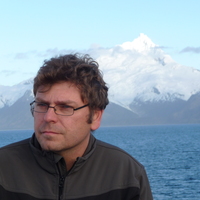
Uploads
Papers by Xosé Ignacio Vilaseco
- A fairly static one, characterizing tombs resulting from a single constructive episode, without further alterations.
- Another, more dynamic, affecting certain monuments that start as a single-chamber mound, then undergoing an aggrandizing process that finishes in the raising of a passage-grave.
- A deconstructive pattern, experienced by a number of mounds where stone chambers are total or partially dismantled, to be substituted by simpler structures such as pits and stelae.
With respect to those patterns two questions may be posed, none of which has a straight answer: whether a chronological factor is at play and the eventual changes in the funerary ritual attached to those shifts in design.
stone chamber are found, containing a varied array of funerary structures (pits, stelae being the most common). The actual use of these constructions is not known in detail, for the acidic soils prevent the preservation of bones and other organic matter but in spite of the generally assumed collective character of the
internment, the architectural features of some tombs point out to a more restrictive access and that could be specially the case once the passage graves cease to exist towards the beginning ot the 3rd millenium BC. In some cases the construction and utilization of the funerary mounds goes through several phases
that sometimes include the modification or destruction of an older chamber, superseded by a larger and more complex one.
- A fairly static one, characterizing tombs resulting from a single constructive episode, without further alterations.
- Another, more dynamic, affecting certain monuments that start as a single-chamber mound, then undergoing an aggrandizing process that finishes in the raising of a passage-grave.
- A deconstructive pattern, experienced by a number of mounds where stone chambers are total or partially dismantled, to be substituted by simpler structures such as pits and stelae.
With respect to those patterns two questions may be posed, none of which has a straight answer: whether a chronological factor is at play and the eventual changes in the funerary ritual attached to those shifts in design.
stone chamber are found, containing a varied array of funerary structures (pits, stelae being the most common). The actual use of these constructions is not known in detail, for the acidic soils prevent the preservation of bones and other organic matter but in spite of the generally assumed collective character of the
internment, the architectural features of some tombs point out to a more restrictive access and that could be specially the case once the passage graves cease to exist towards the beginning ot the 3rd millenium BC. In some cases the construction and utilization of the funerary mounds goes through several phases
that sometimes include the modification or destruction of an older chamber, superseded by a larger and more complex one.
Los cambios medioambientales y la presión antrópica están afectando de forma creciente y global a las zonas costeras. Cientos de yacimientos arqueológicos del litoral europeo se ven de este modo afectados por una más o menos rápida destrucción, acelerada por la subida relativa del nivel del mar, la erosión o las modificaciones de todo tipo que sufren las áreas litorales.
En el caso del litoral gallego, la erosión de todo un conjunto de monumentos prehistóricos en el islote de Guidoiro Areoso (Illa de Arousa, Pontevedra) ha atraído la atención no sólo de la comunidad científica sino también de una parte importante de la prensa y la sociedad gallega, preocupada por el conocimiento y preservación de su patrimonio. Varios proyectos de investigación desarrollados recientemente en otras zonas costeras del oeste gallego han puesto igualmente de manifiesto lo problemático de la situación.
A pesar de algunos esfuerzos por investigar y frenar la destrucción de los yacimientos descubiertos en Guidoiro, la situación del conjunto empeora día tras día. El mejor ejemplo de esto: la denominada “Mámoa 5” ha quedado destruida recientemente.
Ante esta situación crítica, y con el objetivo de recopilar el máximo de información posible sobre Guidoiro y sus yacimientos, un conjunto de arqueólogos de distintas instituciones nos hemos organizado para llevar a cabo una iniciativa abierta al conjunto de la sociedad.
Hacemos una llamada a la participación colectiva de todas las personas que estando en posesión de imágenes y vídeos sobre el islote y/o sus yacimientos previos al 2013 quieran enviarnos esos documentos con el fin de:
- Realizar un seguimiento de cómo ha evolucionado la línea de costa en el islote, y cómo la erosión de ésta ha afectado y afecta a la preservación de los yacimientos.
- Reconstruir sin necesidad de intervención directa en los yacimientos la morfología y características de aquéllos que hayan podido ser ya destruidos o haber sufrido alteraciones importantes.
- Contribuir, con ello, al conocimiento y protección del patrimonio natural y cultural del islote.
Las imágenes deben ser anteriores a 2013 y serán enviadas en formato digital (original o escaneadas a partir de negativos o positivos en papel).
Para más información, pueden contactar con nosotros en: guidoirodixital@gmail.com
Y visitar:
- http://guidoirodixital.wordpress.com/
- https://www.historypin.org/channels/view/54782/#!map/index/#!/geo:42.535812,-8.897087/zoom:14/
- https://www.facebook.com/guidoirodixital
Esta iniciativa es una acción promovida desde el proyecto Marie Curie-IEF eSCOPES: “Evolving spaces: coastal landscapes of the Neolithic in the European Land’s Ends” de la Universidad de Durham con la colaboración del Instituto de Ciencias de Patrimonio (Incipit), Consejo Superior de Investigaciones Científicas (CSIC), de miembros del Grupo de Estudos para a Prehistoria do NW Ibérico de la USC y de investigadores independientes.
Facing this situation, we recently launched an initiative ("Guidoiro Dixital", Digital Guidoiro) to recover image and video records of Guidoiro Areoso from private archives, to integrate them into a wider monitoring analysis (3D modelling), to engage on a dialogue with local communities and to regularly provide them with information on the advances and results of the project. "Guidoiro Dixital" has been disseminated in a number of ways, including the media and a variety of social networks. In this presentation we will summarize the main results of this initiative, and we will discuss why this approach is essential to bring together researchers, heritage managers and the public.
In this paper, we review the archaeological evidence in Guidoiro Areoso and we show how archaeological research has revealed a continuous occupation of the islet during Prehistoric times. The results of the latest geomorphological studies and the last archaeological research works developed there between 2016-2017 are also summarized, helping us to contextualize what happened at this key point of the Ría de Arousa some millennia ago. This interdisciplinary research has integrated work by different specialists, thus contributing to apprehend in a better, holistic, way the complex and multi-faceted phenomenon of the human occupation of coastal areas, the impact of our current activity in these coastal environments and the effects of current climate change on the cultural and natural heritage of these regions.
in the megalithic tombs of north-western Iberia, although
in certain cases we have some evidence of planned execution
from a kind of blueprint. On a larger scale, we can make some
observations about the setting of the megalithic mounds, and
the way in which they tend to cluster in cemeteries. Focusing
on the tombs themselves, we observe similarities in structural
design and constructional sequences that suggest the builders
were following a certain set of rules, particularly in the case of
passage graves. Two main issues will be mentioned: changes
in the construction design (and use?) at certain sites, and
the specific outline of the chamber within a regional group
of passage graves. At the level of construction, the range
of variation detected is enormous. It is probably linked
to shifts in ritual and the purpose of the mounds. Three
distinct life-histories for these monuments can nonetheless
be proposed: i) a relatively static model, where tombs were
the result of a single construction episode, without further
alterations; ii) a more dynamic life history, characteristic of
certain monuments that started as a single-chamber mound
but subsequently underwent an aggrandising process; iii) a
deconstructive pattern, experienced by a number of mounds
where stone chambers were partially or totally dismantled, to
be replaced by other structures.
Two questions may be posed with respect to those trends,
neither of which has a straightforward answer: how much are
they a by-product of chronology, and how far were changes in
design the consequence of shifts in funerary ritual?
In this paper we will discuss the different methodologies that had been set up in 1988 and between 2011-2017 on Mound 4 (mámoa 4), a megalithic monument at risk of destruction due to coastal erosion. Among these methodologies, a series of non-invasive and digital tools were used, including geophysical surveys (gradiometer), digital photogrammetry and 3D laser scanning. Added to this, a crowdsourcing initiative (Guidoiro Dixital) was launched in 2014 that aimed to compile old videos and photos of the islet thus generating a response from the local community interested in preserving their heritage while contributing to the long-term analysis of site erosion. The images compiled through this initiative were used to obtain fresh information (generation of additional 3D models) of eroding or already destroyed archaeological sites, including Mound 4.
The combination of these non-invasive and digital approaches has proved to be perfectly adapted to get accurate information on the mounds in Guidoiro Areoso; they were also essential to inform the excavation process that eventually took place on Mound 4 -during the summer of 2017- in order to rescue scientific information from the site before it is destroyed.